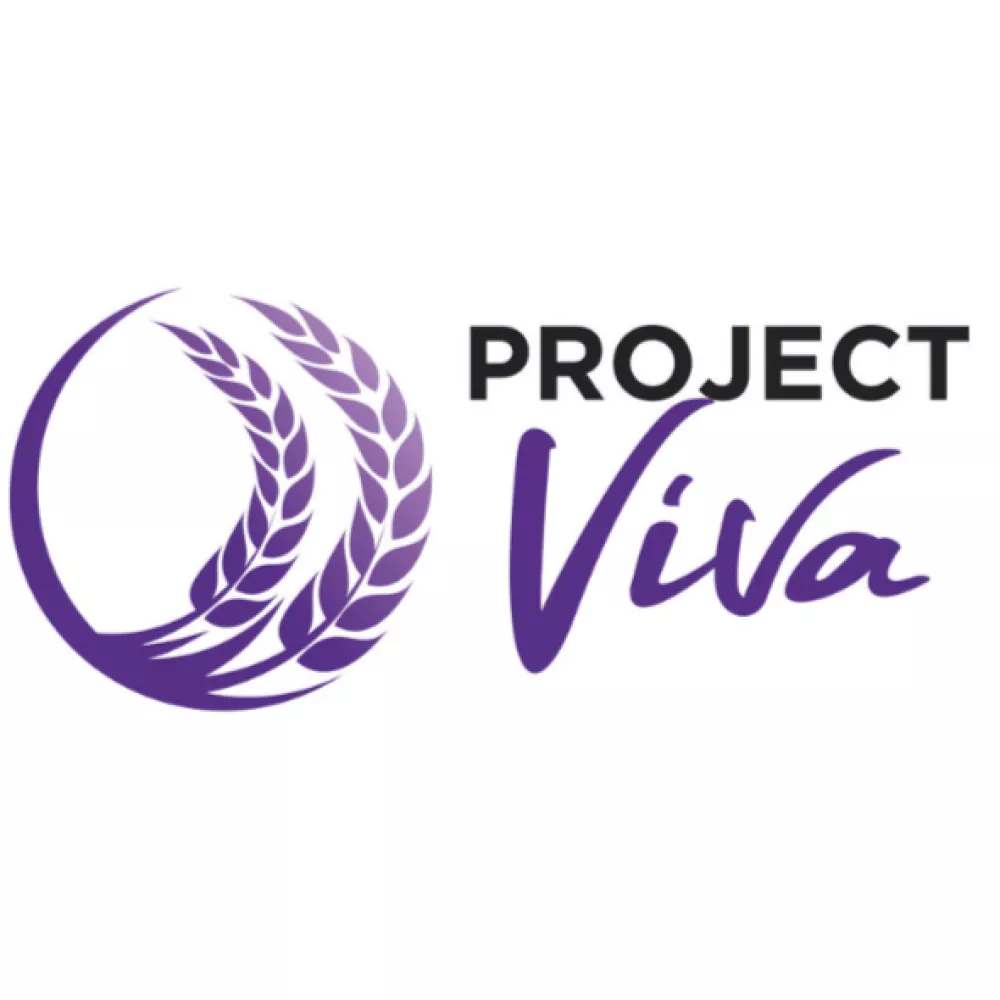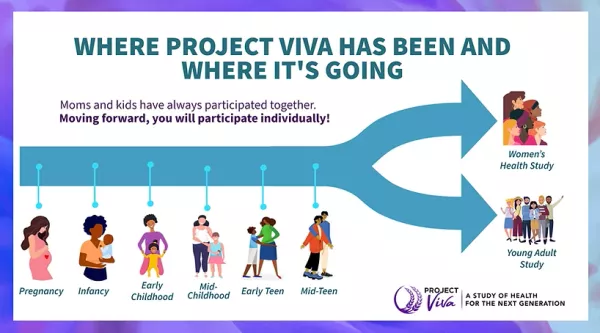Project Viva - Women's Health Cohort
- National Institutes of Health (NIH)
- SCORE: Physiologic and Social Stressors and Health during the Menopausal Transition

Project Summary
Project Viva is a groundbreaking longitudinal research study of women and children that began in 1999. The initial goal of Project Viva was to find ways to improve the health of mothers and their children by looking at the effects of mother's diet as well as other factors during pregnancy and after birth. Over the past two decades, Project Viva has expanded its focus to include a wider range of experiences that influence health extending into midlife for the mothers. Health exposures of interest now include not only diet but also physical activity, sleep, environmental chemicals, air pollution, stressors, mental health, and others. The information we collect enables us to investigate, for example, the effects of a mother's diet during pregnancy. Project Viva began enrolling pregnant women in April of 1999. Project Viva continues to conduct in-person visits with mom participants (now in their mid-life years) and sends out annual surveys to track the changes of participants throughout the years.
Study population
A total of 2,128 babies born between 1999 and 2003 were enrolled into Project Viva. Today, more than two decades later, over 1,000 women continue to be actively engaged in Project Viva research! Project Viva mothers completed in-person examinations during pregnancy, and were seen together with their children at study visits throughout childhood and into the teen years. Project Viva now invites mothers and their children to continue their participation as individuals, as we shift our focus toward separate studies of Young Adult health and Women’s health.
Aims
One of Project Viva's current grants aims to evaluate the associations of physiologic and social stressors in women during the perimenopausal period (mean age of 50 years). Three of the aims are outlined below.
- Aim 1: To study cardiometabolic health, including central adiposity (waist circumference and dual X-ray absorptiometry-measured visceral adipose tissue), glycemia (fasting insulin and glucose), blood pressure, and fasting lipids.
- Aim 2: To study neuropsychiatric symptoms, including vasomotor instability, depressive symptoms and anxiety.
- Aim 3: To study sleep duration and quality, assessed via questionnaires.
